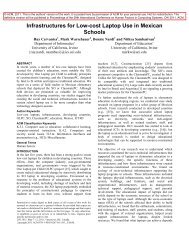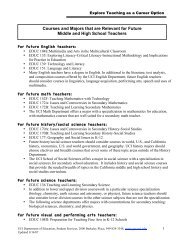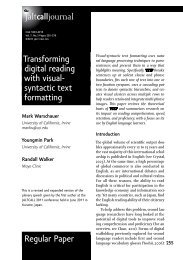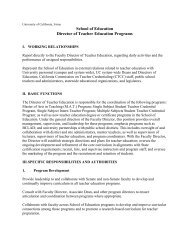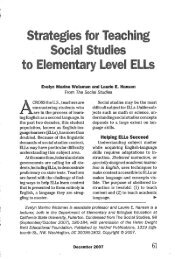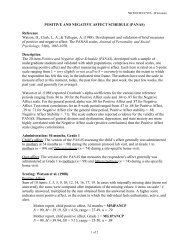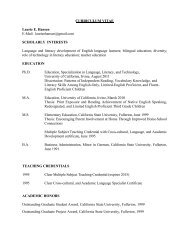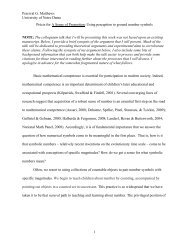NETWORK-BASED LANGUAGE TEACHING
NETWORK-BASED LANGUAGE TEACHING
NETWORK-BASED LANGUAGE TEACHING
You also want an ePaper? Increase the reach of your titles
YUMPU automatically turns print PDFs into web optimized ePapers that Google loves.
282 R. KERN, P. WARE AND M. WARSCHAUERdevelop and refine comments—possibly leading to greater precisionand sophistication of expression; (iii) encouragement of a collaborativespirit among students; (iv) enhanced motivation for language practiceand, in particular, greater involvement of students who rarely participatedin oral discussions; (v) reduction of anxiety related to oral communicationin a foreign language; and (vi) positive effects onstudents’ writing ability and perhaps speaking ability as well.There soon followed a number of studies that systematically comparedthe dynamics of synchronous conferencing with face-to-faceclassroom interaction (reviewed in Ortega, 1997, and Warschauer,1997). These studies confirmed the expected benefits of synchronousconferencing, with the exception of its effects on general writing andspeaking abilities—an area that has been taken up more recently (seeMajor Contributions later). They also revealed an overall greater levelof sophistication of students’ language use (in terms of the range ofmorphosyntactic features and discourse functions). However, synchronousconferencing was also found to introduce a number of unsettlingchanges. For example, Kern (1995) noted that teacher control overclass discussions was compromised, that the rapid pace of written discussionsometimes taxed students’ comprehension abilities, and thatalthough participation was more equitably distributed than in normalclassroom discussion, the coherence and continuity of discussionsoften suffered. Kern concluded that effectiveness had to be evaluatedin relation to instructional goals. Synchronous conferencing fosteredfree expression, student responsiveness, and the voicing of multipleperspectives on issues, but it did not improve grammar or reinforcestandard discourse norms.Noticeable in early NBLT studies was a tendency to test the technologyto see what effects it might have on language use. In the nextsection, we see a gradual shift toward testing theories of second languageacquisition (SLA) within the context of computer-mediatedcommunication.MAJOR CONTRIBUTIONSTwo general trends characterize the bulk of current research on NBLT.The first emphasizes SLA theory and interactionist models of learning.Data analysis typically consists of quantitative counts of the occurrenceof morphological, lexical, and syntactical features in online discourse.The second trend, described by Kern and Warschauer (2000) in theintroduction to their key collection of research articles on NBLT, isinformed by sociocultural and sociocognitive theories and draws on amixture of quantitative, qualitative, ethnographic, and discourse analyticmethods. At issue here is not only quantifying language development,



